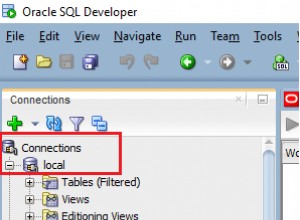Puoi usare il flag di traccia 1200 (su una macchina di sviluppo perché penso che sia globale) per vedere i blocchi eliminati da solo
SET NOCOUNT ON;
CREATE TABLE ##T
(
X INT
)
INSERT INTO ##T
SELECT number
FROM master..spt_values
CREATE TABLE #T
(
X INT
)
INSERT INTO #T
SELECT *
FROM ##T
/*Run the commands first with the trace flag off so the locking
info is less full of irrelevant stuff about plan compilation
*/
GO
PRINT '##T Read Committed'
SELECT COUNT(*) FROM ##T
PRINT '##T NOLOCK'
SELECT COUNT(*) FROM ##T WITH (NOLOCK)
PRINT '##T Finished'
GO
PRINT '#T Read Committed'
SELECT COUNT(*) FROM #T
PRINT '#T NOLOCK'
SELECT COUNT(*) FROM #T WITH (NOLOCK)
PRINT '#T Finished'
GO
DBCC TRACEON(-1,3604)
DBCC TRACEON(-1,1200)
GO
PRINT '##T Read Committed'
SELECT COUNT(*) FROM ##T
PRINT '##T NOLOCK'
SELECT COUNT(*) FROM ##T WITH (NOLOCK)
PRINT '##T Finished'
GO
PRINT '#T Read Committed'
SELECT COUNT(*) FROM #T
PRINT '#T NOLOCK'
SELECT COUNT(*) FROM #T WITH (NOLOCK)
PRINT '#T Finished'
GO
DBCC TRACEOFF(-1,3604)
DBCC TRACEOFF(-1,1200)
DROP TABLE ##T
DROP TABLE #T
Per un tavolo temporaneo globale non sorprende che faccia più la differenza.
C'è ancora una piccola differenza nel tipo di blocco per #temp locale tavoli però. Riproduco quella parte dell'output qui sotto
#T Read Committed
Process 56 acquiring IS lock on OBJECT: 2:301244128:0 (class bit0 ref1) result: OK
Process 56 acquiring S lock on OBJECT: 2:301244128:0 (class bit0 ref1) result: OK
Process 56 releasing lock on OBJECT: 2:301244128:0
#T NOLOCK
Process 56 acquiring Sch-S lock on OBJECT: 2:301244128:0 (class bit0 ref1) result: OK
Process 56 acquiring S lock on HOBT: 2:9079256880114171904 [BULK_OPERATION] (class bit0 ref1) result: OK
Process 56 releasing lock on OBJECT: 2:301244128:0
Modifica: I risultati di cui sopra sono per un mucchio. Per le tabelle temporanee con un indice cluster i risultati sono di seguito.
#T Read Committed
Process 55 acquiring IS lock on OBJECT: 2:1790629422:0 (class bit0 ref1) result: OK
Process 55 acquiring S lock on OBJECT: 2:1790629422:0 (class bit0 ref1) result: OK
Process 55 releasing lock on OBJECT: 2:1790629422:0
#T NOLOCK
Process 55 acquiring Sch-S lock on OBJECT: 2:1790629422:0 (class bit0 ref1) result: OK
Process 55 releasing lock on OBJECT: 2:1790629422:0
#T Finished
Il motivo del BULK_OPERATION lock on the heap version è spiegato qui
. Ma si può vedere che l'overhead di blocco è davvero minimo.




